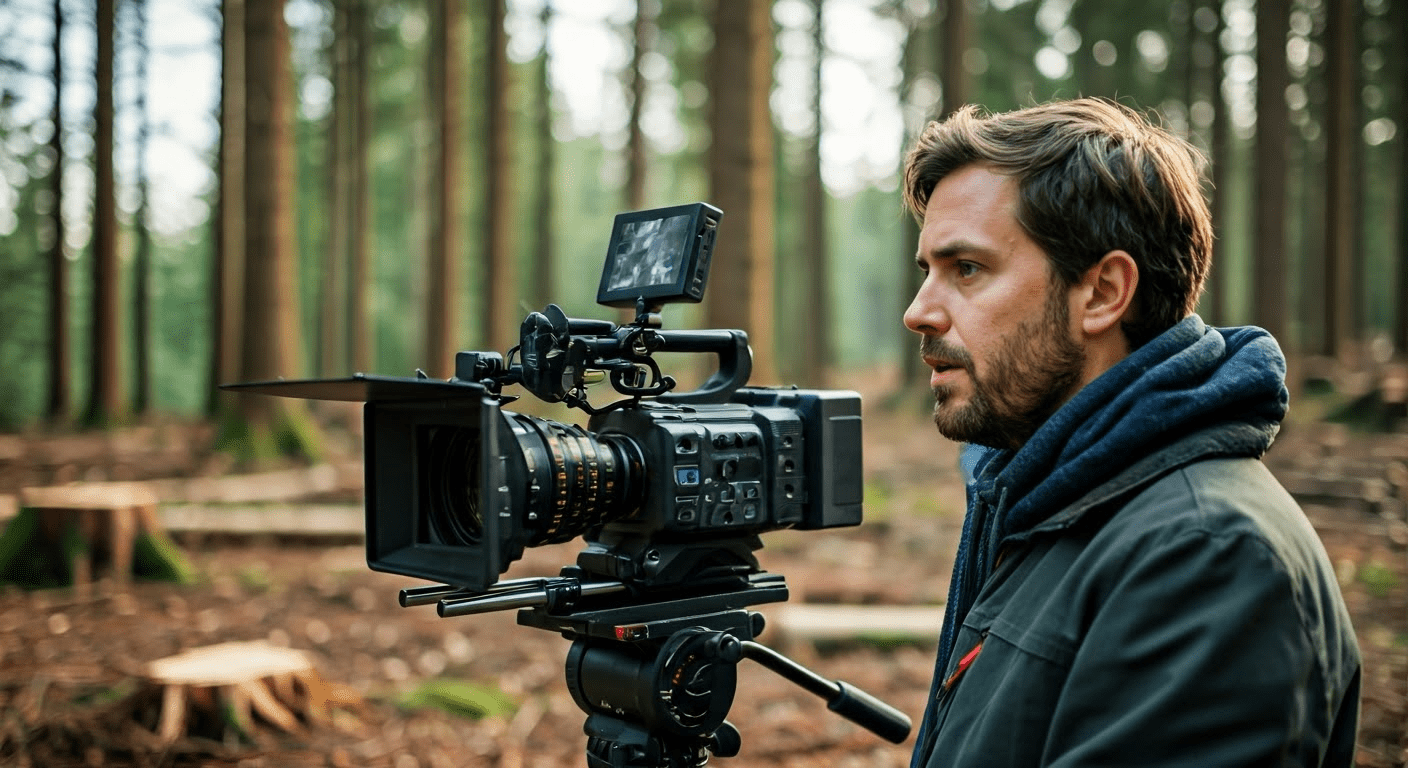-
Culture/
Film/
Environment
Lights, Camera, Action for the Planet!
Can the Cinema Rewrite Our Future?

- Anton Adianto
In a world shadowed by smoke—where tides rise, forests fall and oceans cry plastic tears—a new kind of hero emerges, not with a sword, but with a lens. Environmental films have become modern-day mirrors; they reflect the world we’ve built, for better or worse, and illuminate paths we might yet take. More than just moving pictures, these films are emotional anchors, allowing us to feel the planet’s suffering and hope, turning data into story and facts into empathy.
Environmental Consciousness
Dobrin and Morey (2009) argue that emotional connection is the golden key to environmental consciousness. Through images that stir and voices that haunt, we are moved not just to awareness, but to action. Who could forget the icy calm of Al Gore’s voice as glaciers crumbled in An Inconvenient Truth (2006)? The documentary didn’t just warn—it awakened. Audiences were shaken into conversations that had long slept in political corners. It grossed over $24 million in the U.S. theatrical release, suggesting around 3.7 million viewers, based on an average ticket price of $6.55 in 2006 (as reported by Box Office Mojo), and was associated with increased public concern about climate change, with studies indicating a notable rise in awareness shortly after its release, as noted by Nolan (2010). In the months following its release, the film contributed to heightened public engagement with climate issues, sparking a global discourse, as evidenced by its international screenings and influence on the environmental movement (Wikipedia) and raised awareness (Britannica).
Then came The Cove (2009), as piercing as a scream coming out of silence. With hidden cameras and raw courage, it captured the slaughter of dolphins in Taiji, Japan. The haunting images reached across oceans and struck chords of outrage, fuelling global activism and prompting changes like the removal of dolphin meat from Taiji school lunches, as noted by the Oceanic Preservation Society. Activists gained new ground, demonstrating cinema’s alchemical capacity: transforming cruelty into compassion, stagnation into storm.
And what of Before the Flood (2016), where Leonardo DiCaprio’s narration drifted from melting ice sheets to burning forests, his voice a vessel for the planet’s grief? The film was made freely available on the National Geographic YouTube channel, amplifying its reach to a global audience. While Google Trends (2016) indicates a spike in searches for “climate change” and “renewable energy” following its release, specific impact data requires further analysis. Nonetheless, its accessibility sent ripples across classrooms and dinner tables worldwide.
Voices of Southeast Asia
But this narrative isn’t only written in Western minds. In Southeast Asia—where islands are swallowed by tides and forests fall to greed—filmmakers are telling stories with mud on their feet and fire in their hearts. In Indonesia, Semesta (2019) sings in seven voices, telling of a Balinese priest who blesses reforestation, a female mayor championing clean energy, and a Dayak tribe guarding the lungs of Kalimantan. Their stories do not preach; they simply reveal. Rooted in spirituality, culture and place, the film shows that environmentalism is not foreign—it is familiar, familial, ours. Schools and communities have embraced it, weaving it into education and local pride. Meanwhile, Pulau Plastik (2021) is another wound laid bare. With every frame, we watch rivers choke and families eat food laced with invisible toxins. It confronts us with what we’ve tried not to see, but it also empowers, fuelling Jakarta’s plastic ban and lending wind to Indonesia’s growing zero-waste movement, as supported by GAIA Asia Pacific (2022). In the Philippines, Delikado (2022) offers a portrait of courage. Set in the verdant wilds of Palawan, the film follows land defenders who risk their lives to guard what remains. It is not just a film; it is a battle cry. After its release, the world took notice: human rights groups rallied, letters were sent, and names were remembered.
Even short films like The Story of Stuff (2007) show the ripple effect of simplicity. Its clean animation and sharp wit unpacked the cost of consumption in 20 minutes. Widely distributed and utilised in classrooms globally, it has inspired viewers to rethink what they buy and why, encouraging a shift toward sustainable choices, as noted by its educational adoption (The Story of Stuff Project).
Films Alone Are Not Enough
But films alone are not enough. As Cox and Pezzullo (2016) remind us, cinematic fire must be channelled into real fuel. Campaigns, education and dialogue are the bridges from screen to society. The most impactful films are not just watched—they are used as tools, rallying cries, and seeds for change. Yet, their impact can be fleeting.
This narrative extends beyond environmentalism. Storytelling, as The Future Atlas advocates, shapes how we act and connect. From Hollywood stages to Javanese rice fields, the lens has become an altar where stories are offered, and futures prophesied. These films draw us near to melting ice, poisoned rivers and endangered voices, holding our gaze until we see—and once we see, we cannot unsee. Their work aligns with design thinking and cultural foresight, offering models for organisations to engage communities in meaningful ways.
The environment is no longer a backdrop; it is a protagonist—wounded, waiting, still singing. Environmental films remind us that the world does not need saving from afar. It needs storytelling that stirs the soul, awakens the will, and whispers, “You are part of this, too.” In every frame lies a choice, and in every story, a mirror. What world will we choose to build, now that we’ve watched what could be—or has already been—lost? The answer starts with the stories we tell today.








